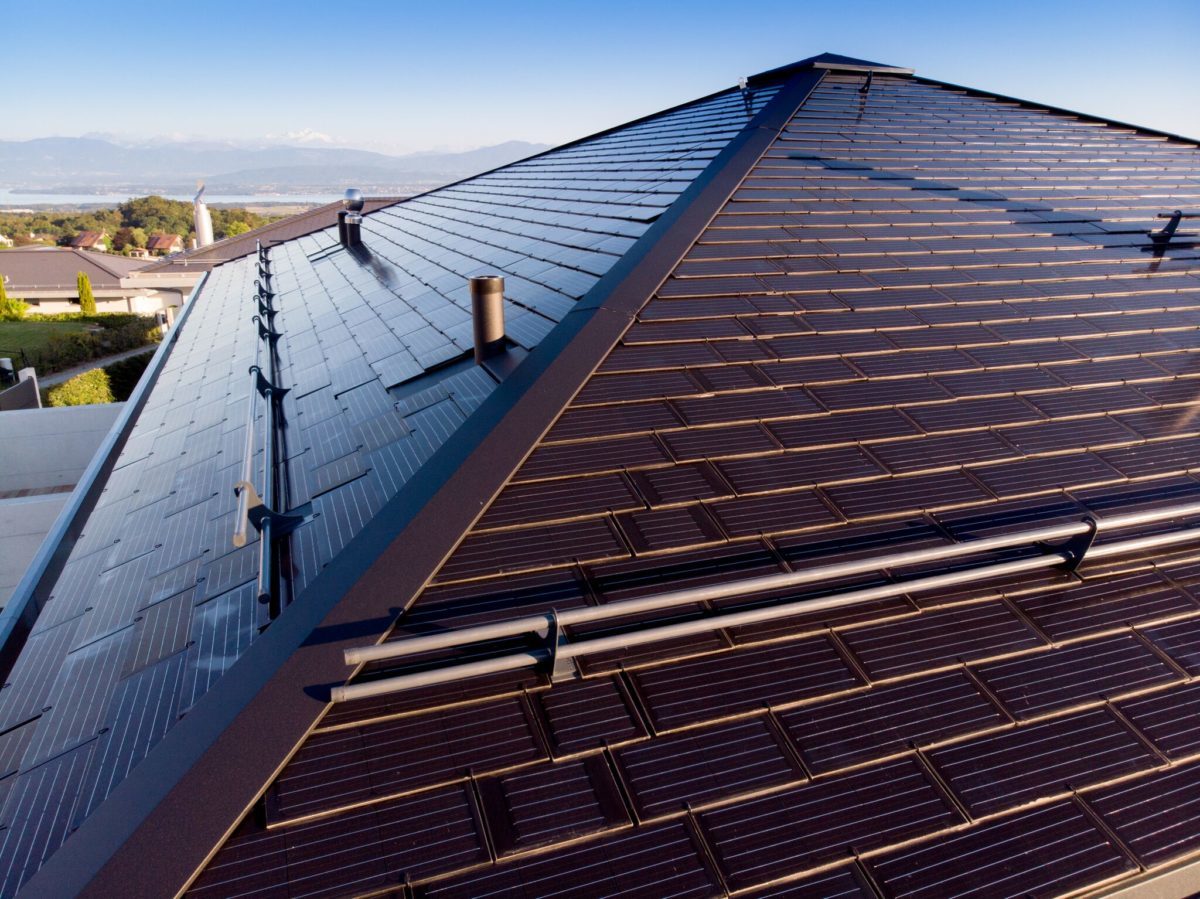
From the pv magazine global site
Swiss start-up Freesuns has developed solar tiles for building-integrated PV it claims can be used on historic as well as new buildings.
Freesuns chief executive John Morello said the tiles can be sized to completely replace conventional roof tiles in fiber-reinforced concrete, with three models able to potentially cover 100% of a roof surface, including on complex roof layouts.
Every tile hosts an electrical safety circuit to help prevent fire-risk, the company said, adding the product is manufactured with double tempered glass.
Three styles
Solaris’ standard tile is a 525mm by 460mm tile which reportedly delivers 154 W per square meter. It costs $299 excluding VAT. Morello told pv magazine, “This value is just an indicative value as the price can change depending on the complexity of the project.” The tile – glossy black with silver lines – is said to be ideal for new-build or renovated structures as it offers a modern architecture style.

The standard tile has been deployed on a 2,200 square-foot residential roof in Colombier, Switzerland, amounting to 28 kW of solar generation capacity and added 32 kW on a 2,600 square-foot residential roof in the municipality of Pully.
The premium model is a 420mm by 400mm product with a slightly lower output of 136 W per square meter. The model is recommended for modern architecture and for the replacement of cement tile roofs.
The (more expensive) matte gray product has no visible lines and could be used to replace slate-style roofs on historic buildings, according to its developer.

The tiles were installed on a small house located in the 18th century Grand Chalet of Rossinière, one of the oldest chalets in Switzerland.
“For such an important heritage property it was critical to preserve the historical context in the appearance of the roof so it remained sympathetic to the site,” Freesuns said. “It was also a challenge to convince the local authorities charged with protecting the heritage of the Grand Chalet to allow solar on the roof of this building.”
The roof of the small house of the historical building now hosts 8 kW of PV capacity across its 600 square-foot roof. The matte tile is also being used on a 168 kW project under development on a 12,900 square-foot roofspace at another historic building in Switzerland.
Freesuns said the tiles come with a warranty which guarantees they will maintain 90% of power output after 10 years and more than 80% after 20 years.
This content is protected by copyright and may not be reused. If you want to cooperate with us and would like to reuse some of our content, please contact: editors@pv-magazine.com.









Definitely a good looking tile/roof/solar product. I wish them well!
“Every tile hosts an electrical safety circuit to help prevent fire-risk, the company said, adding the product is manufactured with double tempered glass.”
So, this company claims a “safety circuit” on “every tile”, something that should meet the NEC 2020 RSD requirement on roof top solar PV. I have not come across that claim from the TESLA solar PV roof tile. I still have to wonder, a fire during the day requires the fireman to cut or chop through the roof to vent and maybe insert a water fan to knock down an attic fire. Without a “circuit per tile” how does one meet the RSD requirements? With a “circuit per tile” how does one “troubleshoot” bad tiles on the roof of which may have several hundred? Solar PV has typically been relatively simple, cells into panels, panels into strings, strings in parallel to create power arrays. Individual tiles into (groups), “snapped” together into strings then brought into some combiner box somewhere to complete the array block that would go to a house inverter or ESS system.
Very Cool! Good to see Tesla get some healthy competition.
Installing 100% active tiles is a lot of PV production for the size of the buildings. These buildings will clearly be feeding back 50% or more of their production into the grid. That’s a good thing!